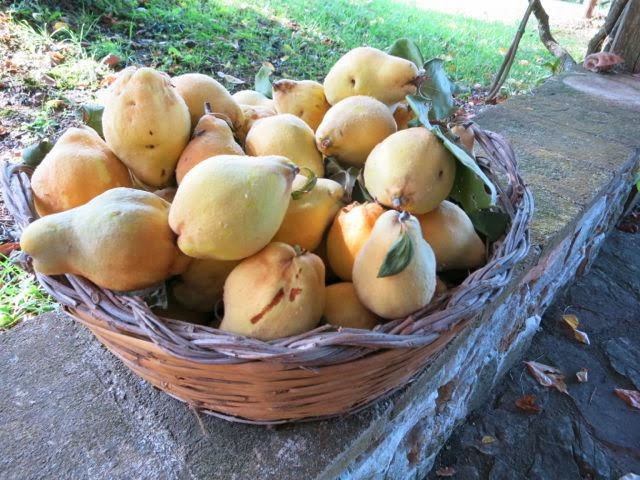
Every year I get super excited about our quince tree. I wait and wait for our puny crooked tree to produce some quince. I always think there will either be none at all, or too few to do anything with.
And then, of course, I end up with way too many.
While I love them dearly, and have visions of jam, cotognata , crostatas, and poached quinces, in reality they are a pain to deal with. As hard as wood, they really take a supreme effort to transform the bright yellow, slightly fuzzy orbs, into the delicious edible fruits that they are.
This year was no exception. In fact, I think this was our biggest quince harvest yet. I ended up with about 10 kilos of fruit.
Since I’m not a huge fan of jam in general, but love the idea of poached quince, I decided to try my hand at canning. Last year I made lovely poached quince, served with mascarpone, and I thought wouldn’t it be grand if I could somehow stretch this treat out through the winter?
I felt so ‘little house on the prairie’ filling my ‘larder’ with canned fruit.
Still, I was not looking forward to the whole peeling and cutting ordeal. As I mentioned, they are hard as rocks, and peeling usually results in some sort of bloody slip up.
I managed to avoid this though, through a little internet research. I found out that a quick parboil will soften the skin enough to make it manageable. The coring was still a pain, but once I got it down to a system, and got the right knife and the right music playing, it was sort of zen like.
So far I’ve made it through half of my quince, and am now the proud owner of three huge jars of quince in light syrup.
The other half of my bounty is still sitting quite pretty, in a bowl, on our dining room table. Just sitting there. Being hard and inedible. Waiting for me to channel my inner Laura Ingalls Wilder and start canning more fruit for the winter.
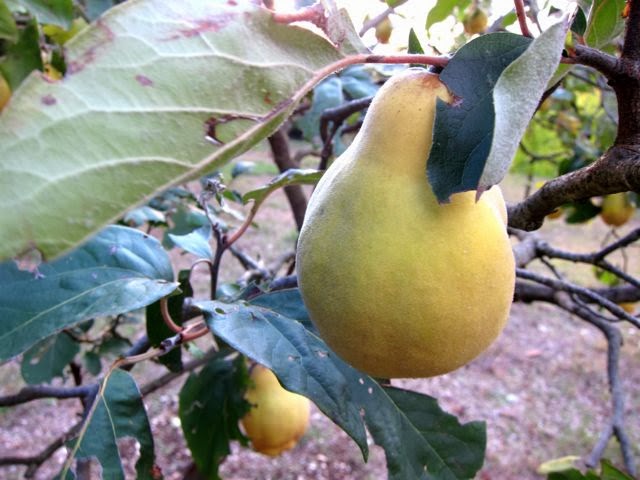
quince in syrup
2 kilos/ 4 pounds quince
1/4 cup lemon juice
2 1/2 c. sugar
3 pint jars
Prepare your jars: I usually just stick my washed and dried jars in a 400F/200C oven for 20 minutes. This will sterilize them.
Prepare your lids: Boil them for 5 minutes.
Wash the quince well, scrubbing off the fuzzy coating.
Fill a large bowl with cold water.
Put 4 cups of water into a large pot and add the whole quince. Bring the pot to a boil, and once it has reached boiling, let it boil for 2 minutes.
With a slotted spoon, remove the quince from the hot water, and place in the cold water, to stop the cooking. Reserve the hot quince water.
Take the cooled quince out of the cold water, and replace it with fresh water to which you have added the lemon juice.
Very carefully, quarter, peel and core each quince, one at a time. I find that the following method works best:
-Cut quince in half.
-Cut first half in half again.
-Peel one quarter, then carefully cut out the woody core with a small paring knife. This is tricky, since you want to keep the quarters whole.
-As soon as you have a completed quarter, but it again, so it is in eights.
-Put the cut pieces in the lemon bath immediately to prevent discoloration.
-Repeat with the rest of the quince quaters and then the rest of the quince.
Add the sugar to the pot of quince water that is on the stove, stirring over low heat to dissolve the sugar.
Add the quince, bring to a gentle boil, and let cook for about 10 minutes. Turn off heat.
Take the hot jars out of the oven, carefully. Fill each with the cooked quince, using a slotted spoon. Fill each jar to about a 1/2 away from the rim. Tap the jars on the counter to release air bubbles,
Bring the syrup back to a boil, then fill each jar with syrup.
Put lid on jars and process in a hot water bath for 20 minutes.
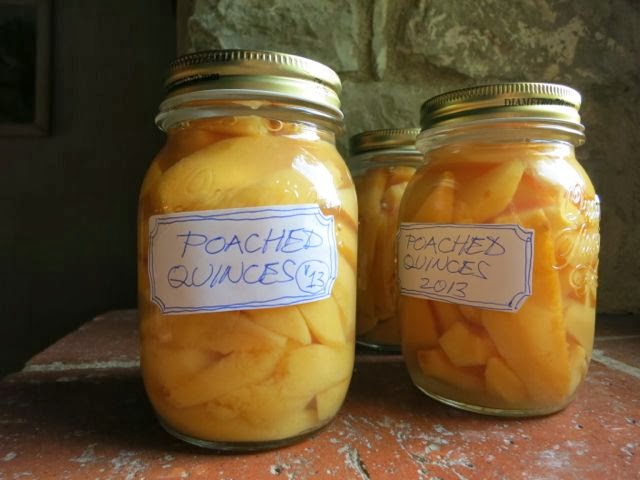
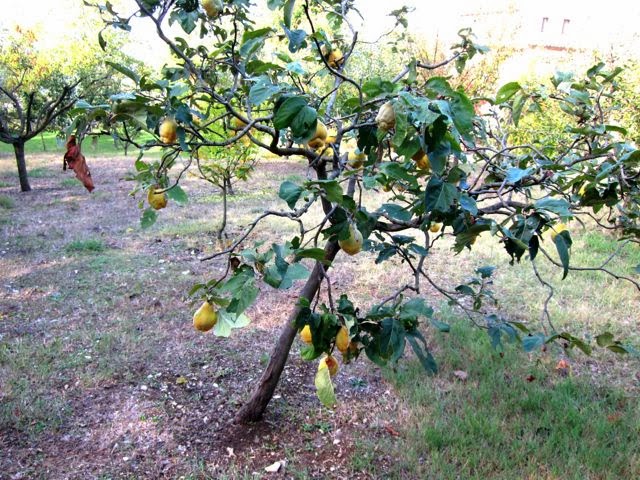
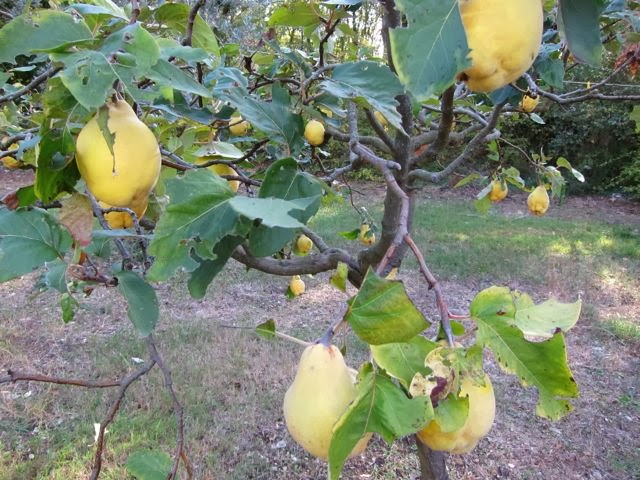
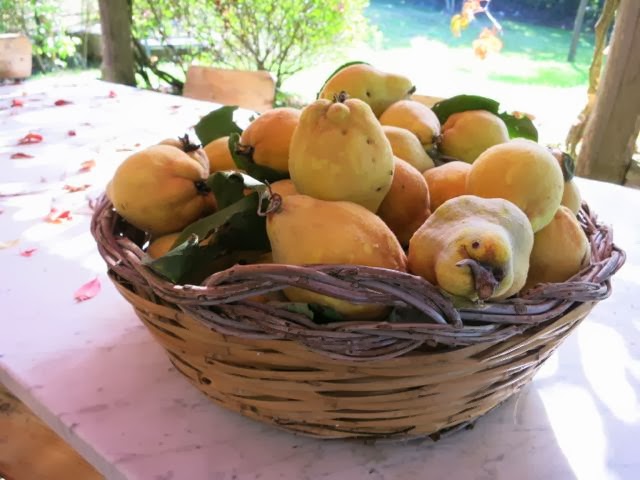
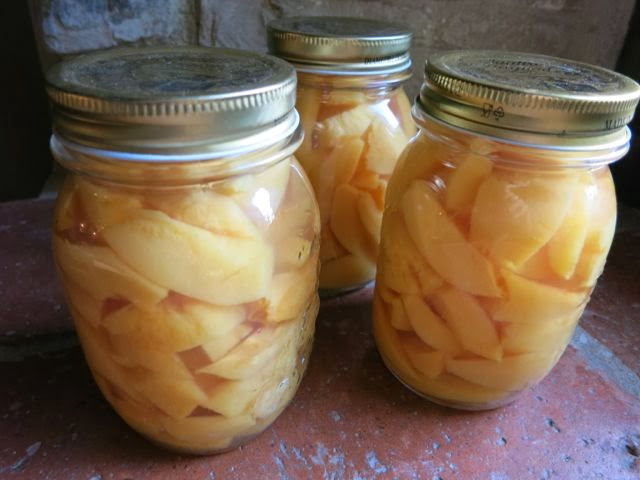
I LOVE Quinces! Best of all is Quince Jelly. You do not have to peel or core the fruit. Just chop and boil then strain through muslin. Add sugar and voila you have jelly. Quince paste (or Quince Cheese as some call it) is divine with Pecorino cheese. I have never thought to can them but as you say, would be a delightful winter dessert. Thanks again for all your wonderful blogs. They make my day.
We did make quince jelly one year. Such a gorgeous color! And Domenico made a batch of quince paste this year. Even though it turned out a bit mushy, the taste is incredible.
I envy you — it’s very rare to find quince here in the States. When I do find some, I make membrillo. Your jars looks lovely…
thank you!!!
thank you for the informational instructions. I just got my first batch – from giveaways-unknown provider. I hope to can these – maybe two batches – to add to jelly next year. Thornless blackberries, apples, maybe new mulberries, blueberries, boysenberry and hope to buy a crabapple to do the same. So looking forward to using these.thankyou.
these look interesting never have tried them not sure we have them in our supermarkets but I will look next time Lovely post
I am so proud of you! I know what you mean about them being as hard as wood! However, I love the taste, so always end up buying some at the farmer’s market. So far, cardamom poached quince, quince crostata on the weekend (think I’ll mix in some apple & pear). Maybe a condiment to serve with cheeses? Don’t you just love how fragrant they are, like perfume I think! One of the things I adore making with them is a quince tarte tatin, the colour is amazing and the taste…like heaven!
Love quince tarte tatin! And maybe some of these will make it into one of those over the winter.
Dear Elizabeth, the quince apples are the best fruit for the MOSTARDA !!! silvia